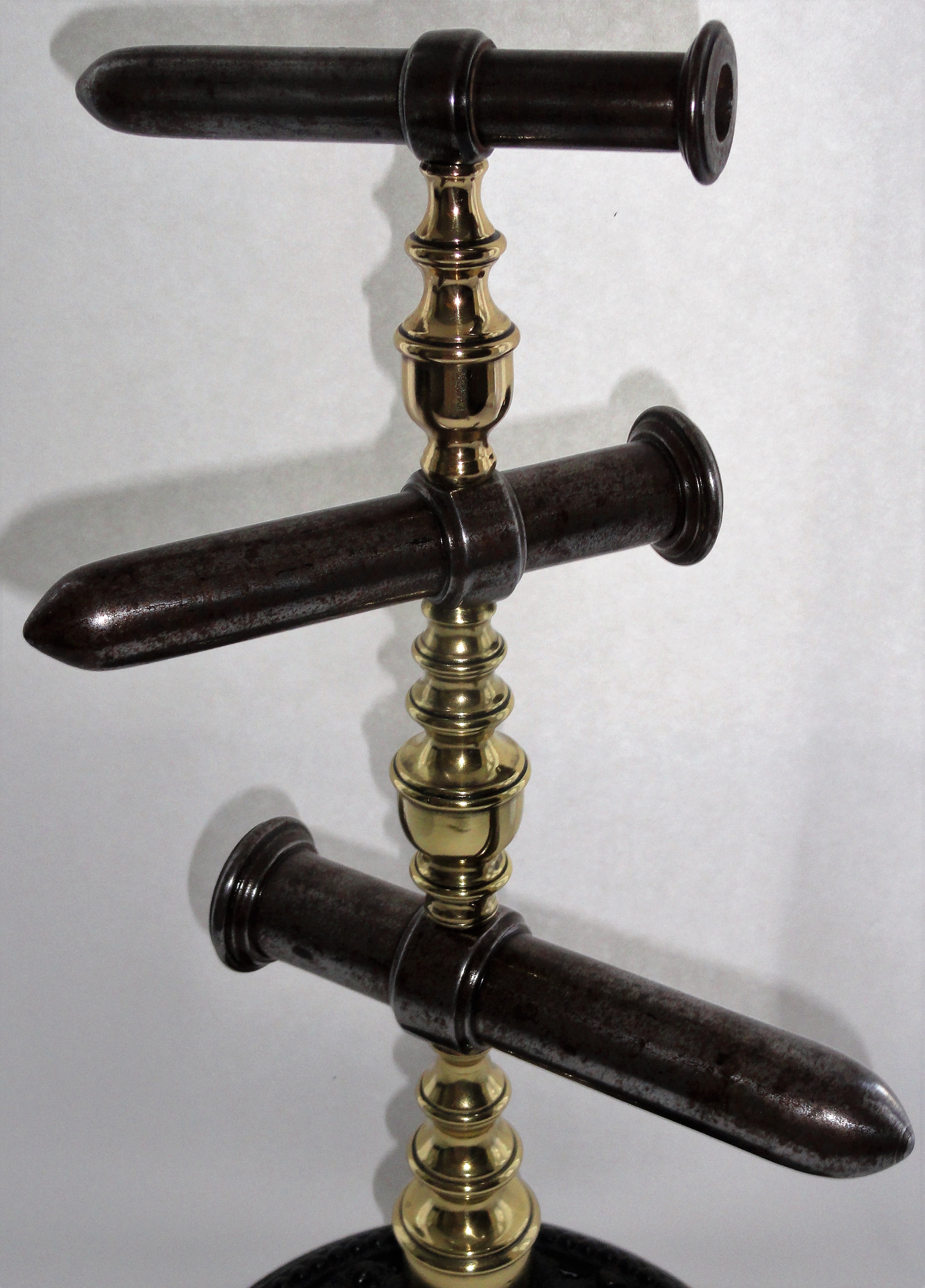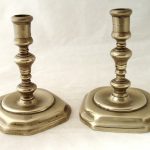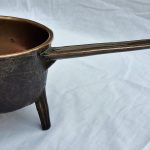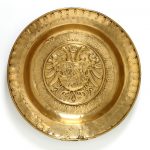19th Century Triple-Barreled Goffering Iron

Materials: wrought iron, brass and cast iron.
Dimensions: height 44.45 cm / 17.5 in, base diameter 20.95 cm / 8.25 in. Barrels – Top 5.56 in x 1.18 in, centre 6.25 in x 1.5 in, bottom 7.37 in x 1.75 in.
Place of Origin: unknown.
Date: 1825-1850.
Maker: unknown.
Present Location: private collection.
Explanation:
The goffering iron was used to shape and smooth fabric, especially decorative features of clothing, e.g. caps, frills and ruffles. The hollow barrel of the iron was heated by inserting into it a red-hot iron rod, similar to a poker. The damp fabric was then stretched over the hot barrel to shape it.
Goffering irons were introduced to England in the 17 th century and were made in wrought iron and later in brass and steel, as well as in various combinations of metals. They had one or more barrels of various sizes, some examples having as many as four. This example has three barrels, made of wrought iron.

The pierced, decorative base is cast iron and the stem is constructed of turned, graduated brass sections. The heating rods for goffering irons were very plain in the earlier period, but later models usually had a wooden handle. During the 19 th century it became possible to buy decorative stops, which could be inserted in the open ends of the barrels when not in use.

References:
J Seymour Lindsay, Iron and Brass Implements of the English House, Medici Society, London 1924; revised and enlarged edition Alec Tiranti, London 1964, p. 36 and figs.192 -195, 198-204.

























This Goffering Iron is described and illustrated in “A Gallimaufry of Goffering” by Oliver St. John – Sheet 4 – Item 4.7